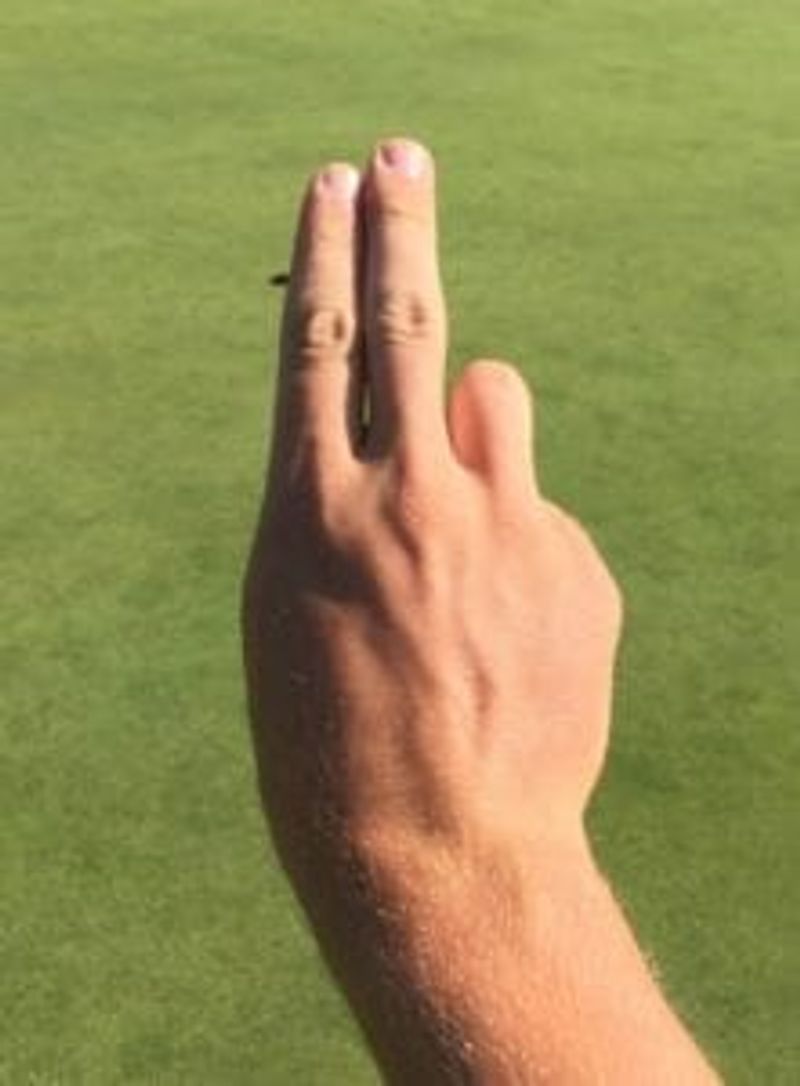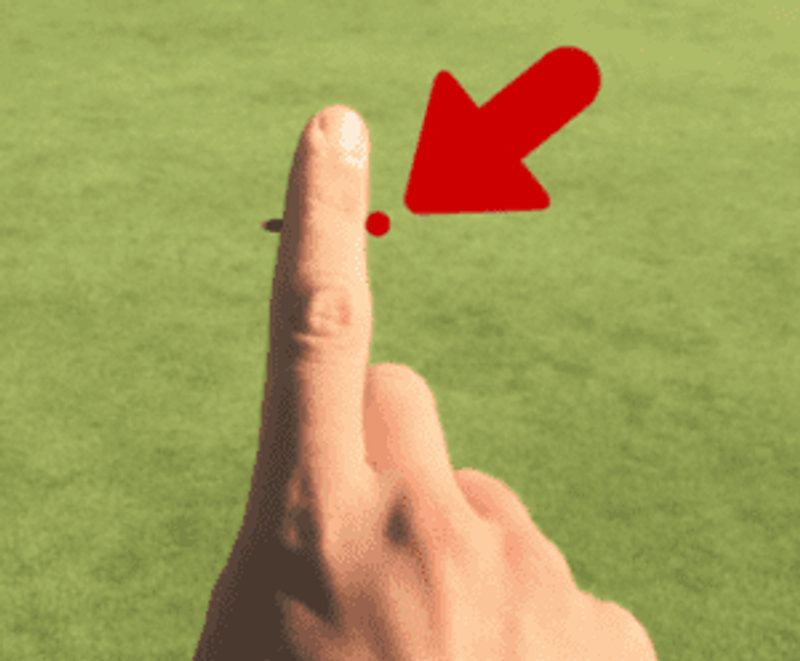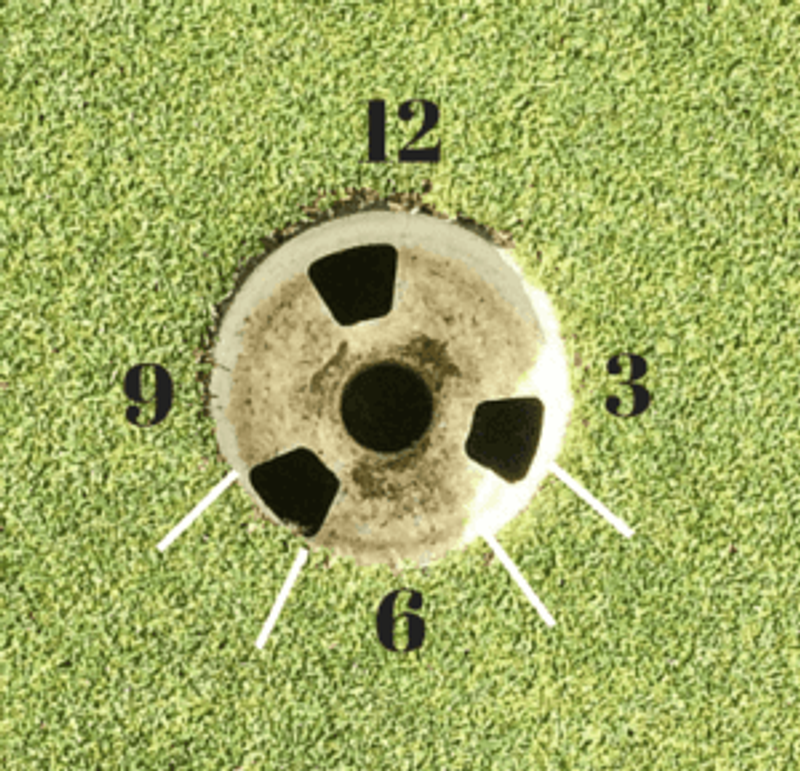This post may contain affiliate links for which I receive a small commission when you make a purchase, at no additional cost to you. See my affiliate disclosure for more information.
Drive for show, putt for dough. The old mantra still exists today, and if you watch golf on tv, you may have noticed major champions like Adam Scott reading greens a bit different than most. The Aimpoint Express green reading system has resonated with the professional tours and may be spreading even faster among competitive amateur golfers. In this post, we will explore what the system is, why pros are using it, and determine whether it is right for your game.
TLDR
- Aimpoint Express is a tour-proven green reading methodology (hint: Adam Scott) that allows a golfer to read greens using their feet to determine the slope percentage of a given putt.
- I would generally recommend the system more for linear putters, but the system can be beneficial for non-linear putters if using to practice green reading
- To learn Aimpoint Express in full, you will need to get in contact with a local certified instructor
What is Aimpoint Express?
I learned the system about one year ago, about the same time that I learned that I was a non-linear putter. If you haven't read my post on linear vs. non-linear putters, I suggest that you do so now, because this post assumes you have a basic understanding of this topic. Anyways, I noticed several of my buddies using the system, and was eager to join the fun. I took a short course from a certified Aimpoint Express instructor whom I knew and immediately started practicing.
Before my lesson, I had no clue what this craze was all about! The truth is, green reading is hard!
We've all been tricked by those subtle breaks every once in a while, and have wished there was a way to overcome this. With Aimpoint Express, no matter who you are, you will be able to correctly read greens with a sufficient amount of practice. I love the system because it finally allows the average golfer to read greens like the pros, without years and years of experience. The only requirement is an adequate amount of practice calibrating your brain to recognize different slope percentages with your feet.
Before diving in to the technicalities, let's take a look at the benefits of the Aimpoint Express System.
Aimpoint Express takes the guesswork out of green reading
I think the number one reason that golfer's miss putts is due to a lack of trust in their reads. It is much better to commit to the wrong line and make a confident stroke than hit a timid putt with the correct line. The reason I like Aimpoint Express is because it allows you to feel confident about your read and thus commit to your line more frequently. Like anything, human error plays a role in the success or failure of the system, but it is the closest thing we've got to perfection when it comes to green reading.
More effective practice
Practicing effectively is one of the biggest keys to a solid golf game. Having the benefit of a green reading system on the golf course is great, but I find the real benefits of using Aimpoint Express on the practice green. As we will explore later in the post, a large component to training your brain to read slopes with your body is the use of a digital level. Although illegal on the golf course, using a digital level will theoretically give you the "perfect read" every time. Knowing that you've read a putt perfectly on the practice green helps increase the effectiveness of your practice because you are training your eyes, brain, and body to read the green. Rather than aiming at the wrong target and compensating with a faulty stroke to make the putt, your practice sessions will be spent aiming at the correct target hitting committed strokes. This trains your brain to see the breaks more accurately on the course, and eliminates the amount of compensation that has to go on during the stroke.
Aimpoint Express is a tour-proven green-reading method
I'm a big proponent of learning things from the people that are achieving the results you want to achieve, so naturally, I was pleased to hear that Aimpoint Express is popular on the professional golf tours. Not only is it accepted on tour, a major champion golfer, Adam Scott, has used this system en-route to a Green Jacket.
If the best golfers in the world are using this method, it is surely an effective green reading system for those who do choose to practice it and use it.
Aimpoint Express improves your aim and stroke
If you have ever taken a class in economics, you might be familiar with the law of unintended consequences. As a result of reading the greens correctly, you will naturally aim the putter better and start the ball on your intended line more frequently. Most golfers don't aim where they think they are aiming, and most golfers don't read enough break in their putts. Dave Pelz proved this in his Putting Bible. If you're not reading the greens or aiming correctly, the only way to make a putt is to compensate in your stroke. If you use Aimpoint Express, you will begin to escape these compensations that cause day to day putting struggles!
So how does Aimpoint Express Work?
Disclaimer: I am not affiliated with AimpointGolf and am not a certified Aimpoint instructor.
Overview
I am not legally entitled to write a full tutorial on how to use the Aimpoint Express system, but my intention is to explain it in just enough detail for you to determine if it is right for you.
As alluded to earlier in the post, Aimpoint Express revolves around reading greens with your feet. In a nutshell, you go to the mid-point of the putt, feel and decide on a certain slope percentage with your feet, and based on this information you use your fingers to read the green.
The photo below demonstrates the basic concept. In the photo, I am reading a right-to-left breaking putt with a slope percentage of 2%. You can see that the left edge of my leftmost finger is aligned with the center of the cup, and the right edge of my rightmost finger is where I should start my putt.

Slope percentage and reading with the feet
I wanted to start with this detail because it requires the most practice of any part of the system. With the Aimpoint Express system, the goal is to be able to recognize what different "percentage slopes" feel like. It is recommended that you use a digital level and click the "tilt percent" button to check yourself. I use the level to find 6 spots on the putting green with the following slopes: 0.5%, 1%, 1.5%, 2%, 2.5%, and 3%.
Once I have found these slopes, I rotate randomly between them, trying to train my brain to identify each of them. After I've done this for a few minutes, I'll walk around the green and use a "guess and check" method for determining the slope. First, I'll guess what I think the slope of the green that I'm standing on is, and then I'll check it with the digital level.
Using this guess and check method helps me get an idea of what different percentage slopes feel like. When reading the slope with your feet, you should stand with your feet about shoulder width apart.
Where to read the putt from
Although there are a few exceptions (5 feet and in, double breaking putts, etc.), the general rule for Aimpoint Express is to find the middle of the putt, and stand on the low side of the putt (the side to which the putt is breaking towards). If the putt is a 15-foot right to left breaking putt, you would walk to 7.5 feet from the hole on the left side of your line.
How do I read the putt?
So you've practiced feeling different percentage slopes and you are standing at the midpoint of a 15-foot right-to-left breaking putt. What next?
After you've determined what you think the slope is at the midpoint of the putt, you'll go back to the ball and read the putt. Say that you've determined that the slope of the putt is about 1%. You would line the left side of your pointer finger up with the middle of the hole, and your aimpoint would be the red dot shown in the picture below.

Green speed calibrations
Before you will be able to read the green effectively with the Aimpoint Express system, you must determine the speed of the green. Once you have determined the speed of the green, you can then "calibrate" yourself.
There are two ways to calibrate with Aimpoint Express. The first way is to straddle the ball and adjust the distance of your hand from your body for different green speeds. If the green your are putting on is rolling slowly, your arm will be much further from your body than on a fast green.
The second way to read a putt is by adjusting the distance that you stand behind the ball according to the green speed while keeping your arm distance constant. In both scenarios, you have one constant factor.
These subtle components to the Aimpoint Express system are the reasons why I would recommend purchasing the instructional DVD or finding a local instructor.
Finding the speed of the greens and calibrating yourself to those speeds is an art that requires one-on-one guidance. That said, I will forewarn you that whenever you go to a new course, you'll have to spend 15 minutes with your digital level experimenting with either the distance of your arm (if you are straddling the ball when reading putts), or the distance you stand behind the ball (if you are keeping your arm distance constant).
Once you start reading the putts correctly, you'll know that you've achieved an accurate calibration.
Downsides to the Aimpoint Express System
As with any methodology there are bits and pieces that certain people dislike. I generally find the system beneficial to any golfer's game, but have one major problem with it that has kept me from a full implementation of it in my own game.
I use it on the practice green as mentioned earlier, but generally stay away from it while playing. The reason for this is the time commitment.
If you decide to adopt this green reading system into your own game, you need to be ready to devote several hours practicing your green reading. If you can't determine the slope percentages within a 1% deviation while on the course, you may as well putt blindfolded, and I can say from personal experience, it is not easy to get the slope percentages within that 1% deviation.
Just like you spend an hour hitting your short-distance putts on the practice green, you will need to do the same for practicing your green reading.
Green reading has historically been an intuitive process for golfers. You bend down, visualize the putt's line, and hit to the line. With the Aimpoint Express system, you often stray away from visualization and more towards "spot putting".
For some golfers (particularly linear putters), putting in straight lines is comfortable. For others like myself, putting to a specific target is discomforting. I tend to visualize a clock around the hole and choose which time I want to enter the hole at.

My primary use for the Aimpoint system is for training my brain to see enough break in my putts. I will use it every so often on the practice green alongside a line on my golf ball to get an idea of where I am currently aiming. It acts as a "reset" for me when my putting has gone south.
Whatever your intentions, I hope this post clears up some of the confusion around the Aimpoint Express system, and I wish you the best of luck on the greens!
